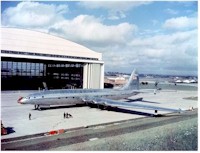|
After reading the article in NetLetter #1442 regarding the Nordair Super Constellation by Alan Giolma, subscriber Paul Gauthier sent us this memory - I was hired as a flight attendant with Nordair in May 1968. Upon hearing the news, one of my cousins told me she had travelled across Canada with Nordair in 1967 on a special flight with "L'Orchestre des Jeunesses Musicales" - rough translation: "The Musical Youth Orchestra"; she was a violinist. I believe they gave concerts in different parts of the country. Paul Gauthier, retired Service Director, Air Canada. |
| Our featured video comes from the JustPlanes YouTube channel as they tag along for a ride on one of two Air Canada A319's configured for ETOPS on a flight from St. John's, Newfoundland to London, England. |
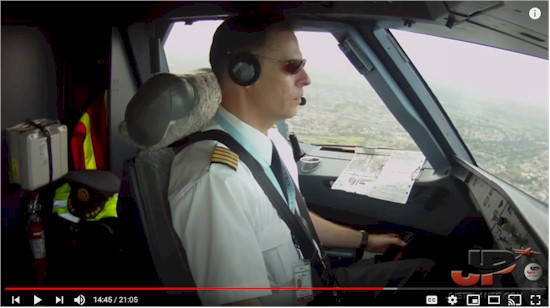 |
|
This memory from Neil Burton - Kamloops, dating back to 1949. The company, then known as "Central British Columbia Airways", under the direction of Russell Baker, purchased Kamloops Air Services and operated a charter float plane base from the Thompson River which passes directly by Fulton Field. Scheduled air service by Pacific Western was introduced from Kamloops in competition with CP Air in December, 1968. The service was the first through the southern B.C. Interior for Pacific Western and was known as the "Stampeder", operating Vancouver - Kamloops - Calgary. Prior to our scheduled service, initial training was done on the new state-of-the-art B-737 aircraft at Kamloops. Jake Hubers advised that during these training sessions, the Pacific Western crews would make a point of stopping for coffee and parking the new B-737 directly in front of the terminal, just before CP Air's scheduled arrival with their old DC-6B and DC-3 aircraft. Pacific Western began scheduled service in December 1968 and CP Air suspended service in the spring of 1969. |
|
| Below are two pictures of CP Air's new B-737, registration C-FCPC (Fin #702), arriving in Kamloops in November 1968. | |
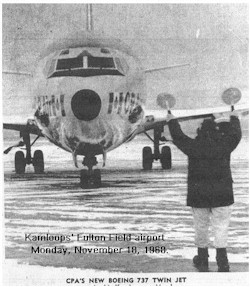 |
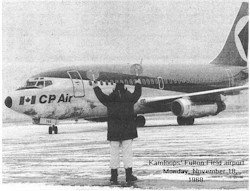 |
|
The competition was just too great, showing passenger loads in 1969 of 50,000 and continuing to increase rapidly until peaking in 1980 at 218,000. The other major contribution to Kamloops by Pacific Western involves the installation of 'Distance Measuring Equipment' (DME) in 1983. As a result of new approach procedures developed exclusively by Pacific Western using the DME, landing limits were reduced from approximately 2,500 feet to 1,100 feet. The result was much improved reliability of air service into Kamloops. April 12, 1985 was a special day for Kamloops, but no more special to anyone than Rowe Hanson, our Senior Agent at Kamloops and the rest of the staff who had worked far too many years in the cramped quarters of the old terminal where they had endured the seemingly endless renovations and disruptions as well as the infamous Kamloops summer heat without air conditioning. Also, the equally infamous Kamloops spring winds which sent tickets and paperwork flying and, of course, the all too adequate air conditioning of winter. What a treat to move into clean, spacious, well designed new quarters! The Kamloops employees were justifiably proud of their new facility and invite our fellow employees to a tour when next travelling to Kamloops. Researched by: Neil Burton |
|
 |
|
|
In our photo we have, from the left: Wayne Rothermel, Neil Burton, Ian McLafferty, Don Barnousky, Sharon Pereverzoff, C.S.M. Jim Wyse, Katya Grahn, Steve Craushaw, Doreen Johnson, Rowe Hansen and Andy Snowie. |
|
|
Editor's note from Ken Pickford - The withdrawal of CP Air service from Kamloops in April 1969 was part of an agreement with the federal government which gave CP Air increased access to the transcontinental route in competition with Air Canada, in exchange for withdrawing from several points in British Columbia which were reassigned to Pacific Western Airlines or B.C. Air Lines (PWA acquired B.C. Air Lines in 1970). PWA had previously been awarded a Vancouver-Kamloops-Calgary route (unrelated to the CP/PW route transfer agreement) which started in mid-December 1968. So for just over four months until April 27, 1969 when CP Air ended service at Kamloops and various other B.C. points, both CP Air and PWA were serving Kamloops. April 27, 1969 was also when CP Air became all-jet, retiring its last few DC-6Bs and DC-3s, except for one DC-3 which was retained for a while and used for pilot training. |
|
|
Jack Morath sends us this memory - Here is a copy of a report in the Heathrow (LHR) Newspaper about the Trans-Canada Air Lines accident in November 1963. If our 'Baggage Unit' had been operating at that time, we would have been very much involved, both Attendants and Baggage Agents. At the time I was working in Purchasing and Stores Department as an Expeditor with Terry Baker as my supervisor. Our section was very much involved whilst the aircraft was rebuilt in the British Airways Hangar. I believe the only injury was a dog in the hold! |
|
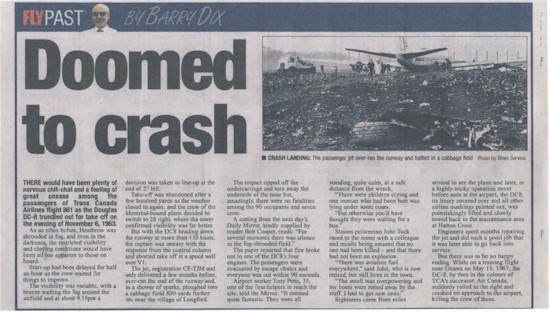 |
|
|
Alan Evans, who lives in South Africa shares this memory - In your recent newsletter you had photos of a Canadian Pacific DC-6B with Pratt & Whitney radials. I never flew the DC-4 but did fly the DC-6 with R-2800 engines. Lots of time on the DC-3. They were great aircraft. I used to fly into Coppermine as a bush pilot in 1966 but also to Cambridge Bay and Yellowknife with Pacific Western Airlines on the DC-6 in 1967. There is something that stirs a deep feeling in my soul when I hear a big radial running. Below are pictures of Pacific Western DC-4 CF-PWJ from previous editions of The NetLetter. See NetLetter # 1391 for the pic on the left, NetLetter # 1392 for the pic on the right. A few of Pacific Western's DC-6 registrations were: All the best, Alan |
|
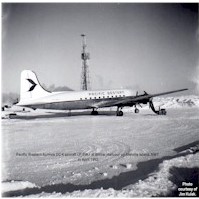 |
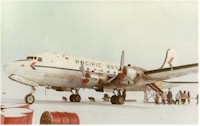 |
|
Bea Backwell sends this comment and photo of the Bristol Brabazon – Largest aircraft ever built at the time, it had test flights but nobody wanted it. Additional Info: |
|
Editor's note from Terry Baker - I remember seeing this aircraft in flight, but it never got into production, no buyers – it was ahead of its time. On 17 July 1953, Duncan Sandys, the Minister of Supply, announced that the Brabazon had been cancelled due to a lack of military or civil orders for the type. In the end, only the single prototype was flown; it was broken up in 1953 for scrap, along with the incomplete turboprop-powered Brabazon I Mk II. |
 The Bristol Brabazon, 1987 Documentary The Bristol Brabazon, 1987 Documentary |
|
Subscriber Hans Sittler sent us this video - I took the video at the “AC Winter Games”, a meeting of AC management from all around the world. We gathered in YUL, by bus to Montebello where AC had booked the complete Fairmont Le Château Lodge. During the day we built teams and participated in various competitions, including curling, which was a first time for me. In the evening a dinner was arranged, Robert Milton gave a speech and the people enjoyed a Beatles Revival band. Those were the good days. I’m not even sure about the year, but I think it was in winter 2008. Perhaps somebody in your team remembers the occasion. Best regards Hans |
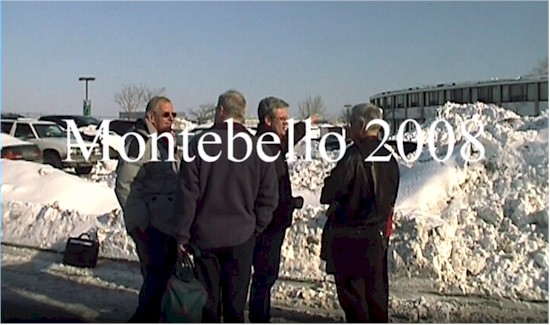 |

